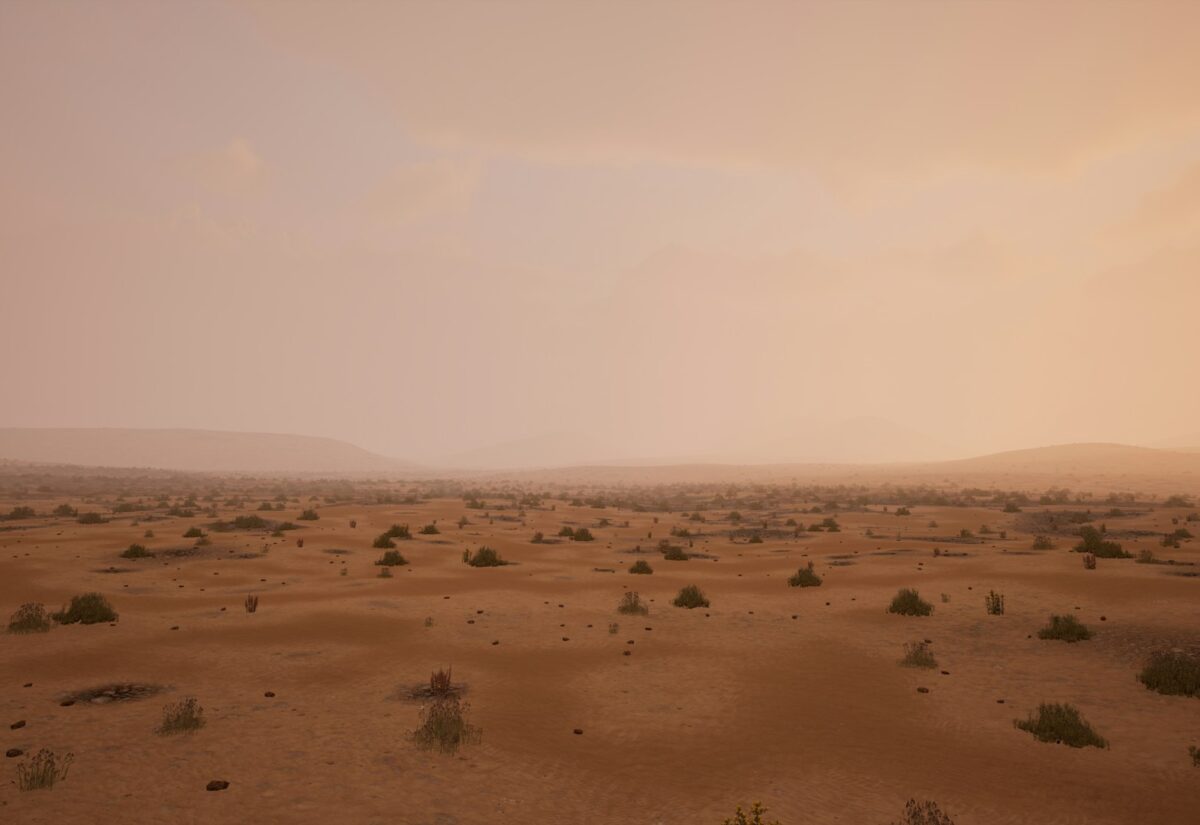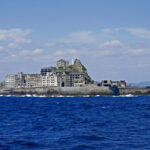 Unsplash/Alexander Mils
Unsplash/Alexander MilsSome of history’s most intriguing mysteries aren’t about who lived where, but what disappeared entirely. Across the globe, entire cities and settlements have risen, flourished, and then inexplicably vanished, leaving behind scattered ruins, cryptic texts, or—in some cases—nothing at all. Sometimes the reasons for their fall are fairly well understood: war, drought, volcanic eruptions, or economic collapse. But other times, the clues are vague, the records inconsistent, and the causes still unknown. These vanished places continue to puzzle archaeologists and fascinate the public, blending the thrill of discovery with the haunting silence of what was lost. Here are 12 historical places that mysteriously vanished—each one leaving behind more questions than answers, and in many cases, more legend than fact.
Atlantis – The lost city under the sea?
One of the most enduring mysteries in Western thought, Atlantis was described by Plato in the 4th century BCE as a mighty island civilisation that had once ruled parts of Europe and Africa before being swallowed by the ocean in a single cataclysmic day and night. According to Plato, Atlantis was a technologically advanced society, rich and powerful (but arrogant!), and its destruction served as a moral lesson.
Whether Atlantis was intended as an allegory or based on real events remains hotly debated. Some researchers believe it may be inspired by the eruption of Thera (modern-day Santorini), which devastated a flourishing Minoan civilisation. Others suggest locations from the Atlantic Ocean to Antarctica. Despite centuries of speculation and countless expeditions, no conclusive evidence of Atlantis has ever been found.
Roanoke Colony – The vanished English settlement
Founded in 1587 on Roanoke Island off the coast of what is now North Carolina, this early English colony was meant to establish a permanent foothold in the New World. However, when a supply ship returned from England in 1590, all 100-plus colonists had vanished. There were no bodies, no signs of struggle—only the word “Croatoan” carved into a wooden post.
Theories about their fate range from assimilation into nearby Native American tribes, to starvation, disease, or being killed by hostile forces. Archaeological efforts have yielded clues but no definitive answer. Roanoke remains one of the most unsettling mysteries in colonial history.
The City of Z – A jungle civilisation lost in the Amazon
The British explorer Percy Fawcett believed a sophisticated ancient city, which he called “Z,” lay hidden in the uncharted Amazon rainforest. Convinced by Indigenous accounts and fragments of pottery and stonework, he launched several expeditions to find it. In 1925, Fawcett, his son, and their companion disappeared without a trace.
Though initially dismissed as fantasy, modern research has uncovered large, complex ancient settlements in the Amazon basin complete with roads, fortifications, and earthworks, suggesting Fawcett’s instincts may not have been entirely wrong. But the specific city he sought, and the mystery of what happened to him, remain unresolved.
Cahokia – The forgotten metropolis of North America
Situated near present-day St. Louis, Cahokia was the largest and most complex city in North America north of Mexico before European contact. At its height around 1100 CE, it may have housed 20,000 to 40,000 people and featured vast plazas, monumental earth mounds, and a highly organised society.
By 1350, it had been almost entirely abandoned. The reasons remain unclear, though environmental stress, deforestation, and sociopolitical instability are among the most cited causes. Despite its scale and sophistication, Cahokia is still relatively unknown outside of archaeological circles—a powerful reminder of how entire civilisations can be forgotten.
Vineta – The Atlantis of the Baltic
Medieval chronicles tell of Vineta, a fabulously wealthy city on the southern coast of the Baltic Sea, which was said to have been consumed by the ocean due to its moral corruption and decadence. According to legend, its sunken ruins can still be glimpsed on clear days, and fishermen report hearing its bells tolling from beneath the waves.
Some scholars believe Vineta may be based on one or more real trading cities in the region that declined or were destroyed due to shifting trade routes, flooding, or invasions. Attempts to link the story to specific locations like Wolin or Kołobrzeg continue, but so far, no definitive match has been found.
Ubar – The lost city of Arabian sands
Known from Islamic lore as Iram of the Pillars, Ubar was said to be a wealthy desert city punished by God and buried beneath the sand. Long dismissed by Western scholars as a religious myth, interest in Ubar was reignited in the 1990s after satellite imagery revealed ancient caravan routes converging at a collapsed limestone cavern in southern Oman.
Excavations at the site uncovered evidence of a prosperous trading centre and fortress that had collapsed due to overuse of an underground water source, lending some credence to the legend. While the grandeur of the original myth remains debated, Ubar has become a prime example of how folklore and archaeology can sometimes overlap.
Helike – The Greek city swallowed by the sea
Helike was a bustling city on the Gulf of Corinth and an important religious centre in ancient Greece. In 373 BCE, a violent earthquake followed by a tsunami reportedly caused the entire city to sink into the sea. Ancient writers including Pausanias and Strabo documented the event, noting that parts of Helike remained visible underwater for centuries.
Modern excavations in the early 21st century unearthed ruins consistent with the historical accounts, including streets, pottery, and foundations buried beneath coastal sediment. Helike stands as one of the best examples of a real city whose sudden disappearance inspired legend.
Thinis – The first capital of ancient Egypt?
Thinis is said to have been the original capital of unified Upper and Lower Egypt during the Early Dynastic Period. It features prominently in ancient records and royal lists as the seat of the first pharaohs, including Narmer. However, despite its importance, its exact location has never been confirmed.
Most Egyptologists believe Thinis was situated near modern-day Girga in Upper Egypt, but no archaeological evidence has definitively identified it. The city may have been built over, destroyed, or absorbed by newer settlements, effectively erasing it from the physical landscape while preserving it in textual memory.
Nan Madol – The mysterious Pacific city
Located off the coast of Pohnpei in the Federated States of Micronesia, Nan Madol consists of nearly 100 artificial islets connected by canals, built atop a coral reef using massive basalt blocks. The city served as the ceremonial and political centre of the Saudeleur dynasty, which ruled the island from around 1100 to 1600 CE.
Why Nan Madol was abandoned remains unclear. Possibilities include resource depletion, internal conflict, or rising sea levels. The logistical challenge of building it—hauling thousands of tons of stone across the island—also remains a mystery. Today, the site is largely overgrown and rarely visited, but it remains one of the most enigmatic places in the Pacific.
Troy – A city lost and found
For centuries, the city of Troy was considered a mythological construct, the backdrop for Homer’s Iliad rather than a real place. But in the late 19th century, German archaeologist Heinrich Schliemann claimed to have discovered its ruins in Hisarlik, in northwestern Turkey.
Subsequent excavations revealed multiple layers of settlement, suggesting the site had been inhabited for thousands of years. While it’s still debated whether Homer’s epic refers to a real war at this location, the rediscovery of Troy transformed it from literary legend to archaeological reality.
Great Zimbabwe – A lost African empire
Great Zimbabwe was a sprawling stone city in present-day Zimbabwe, built by the ancestors of the Shona people between the 11th and 15th centuries. At its peak, it housed as many as 18,000 people and served as a hub of trade, linking the interior of Africa to the Indian Ocean coast.
When Europeans first encountered the ruins in the 19th century, many refused to believe they had been built by Africans, and alternative theories involving Phoenicians or Arabs were promoted, often for colonialist reasons. Today, the site is recognised as a powerful testament to African engineering and statecraft. Its decline may have been due to resource exhaustion or political shifts.
Ani – The forgotten Armenian capital
Ani, once a thriving medieval city on the Silk Road and capital of the Bagratid Armenian kingdom, was renowned for its churches, palaces, and fortifications. In the 10th and 11th centuries, it was known as the “City of 1,001 Churches” and rivalled Constantinople in beauty and grandeur.
Over the centuries, it suffered from earthquakes, invasions, and shifting trade patterns. By the 18th century, Ani was almost completely abandoned. Today, it sits near the Turkish-Armenian border, its ruins largely unprotected and subject to erosion, yet still echoing the former splendour of a city lost to time.



